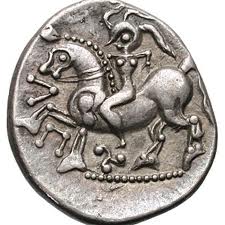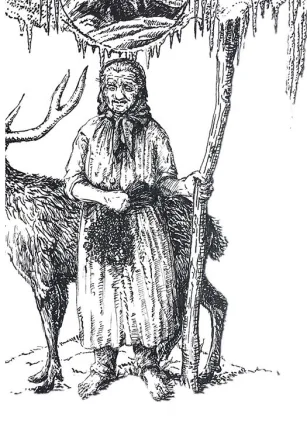Where are the Celts originally from?
- vieblakey
- May 24, 2022
- 4 min read
Updated: Nov 22, 2024
Who are the Celts?
The ancient Celts were a collection of tribal people that originated in central Europe and that shared similar culture, language and beliefs.

Photo by Martin Scott Powell
Where were the Celts located?
Over the years, the Celts migrated. They spread across Europe and set up shop everywhere from Turkey and Ireland to Britain and Spain.
The first record of the origin of the Celts was in documentation kept by the Greeks, and it cited their existence to around 700 BC. We can take it for granted that these ancient people existed long before this.
Map of the Celtic Migrations and Expansion: Where are the Celts from
The Celts were fierce warriors and, by the 3rd century BC, they had a stronghold on a large chunk of Europe, north of the Alps.
What happened to the Celts?
Then the Roman Empire set off on a conquest to expand their control on Europe.
Under the leadership of Julius Caesar in the 1st century BC, the Romans killed large numbers of Celts, wiping out their language and culture in many parts of Europe except in many parts of Scotland, Wales and Ireland.

A relief depicting the Gauls of Ambiorix fighting the Roman army of Julius Caesar in the mid-1st century BCE.
What are the beliefs of the Celts?
The Celts were what’s known as ‘Polytheists’, which means that they believed in a number of different gods and goddesses.
There wasn’t one central religion that the many different groups of Celts followed. In fact, different groups of Celts held different beliefs.
Druidism
The religious leaders in Celtic communities, and those regarded as intermediaries between humanity and the gods, were the Druids, a class of individuals known for their great wisdom and knowledge of traditions.
The Druid priests of the Celts did not write down the stories of their gods and goddesses but instead transmitted them orally, so our knowledge of the early Celtic deities is limited.
Painting of a female druid (or druidess) by the French painter Alexandre Cabanel
We know that they were influenced by the gods and religious practices of earlier and neighboring cultures. Further, when the Roman Empire expanded across Europe, the Celts adopted and adapted many facets of the Roman religion.
Celtic gods were also associated with such phenomena or natural places as the sun, lightning, warfare, rivers, and particular tribes, settlements, and families.
Besides gods, animals were also important to the Celts and were perhaps themselves regarded as sacred, especially the bull, boar, stag, and horse. Many of these animals were regarded as totems with protective qualities and so they appear frequently in designs on weapons and armor.
Some Celtic Gods and Goddesses
Cernunnos
Left: A detail from an interior panel of the Gundestrup Cauldron on display, at the National Museum of Denmark
in Copenhagen
Cernunnos is a horned god associated with fertility, nature, fruit, grain, the underworld, and wealth, and especially associated with horned animals like the bull, stag, and a ram-headed serpent.
Epona
Epona is a Celtic horse goddess associated with fertility, a cornucopia, horses, asses, mules, and oxen who accompanied the soul on its final journey. Uniquely for the Celtic goddesses, the Romans adopted her and erected a temple to her in Rome.
The Morrigan
Left: Illustration by John McCambridge
The Morrigan is a Celtic goddess of war who hovered over the battlefield as a crow or raven.
She represented the circle of life and was associated with both birth and death. Her name translates to “great queen” or “phantom queen”. She is also described as being the patroness of revenge, magic, priestesses, night, prophecy and witches.
Cailleach
Cailleach is a divine hag and ancestor, associated with the creation of the landscape and with the weather, especially storms and winter. In Scotland, where she is also known as Beira, Queen of Winter. She herds deer, she fights spring, and her staff freezes the ground.
Airmid
Airmid (also known as Airmed, Airmeith or Airmedh) is the Celtic Goddess of the Healing Arts. She was also a member of the Tuatha De Dannann, the most ancient race of magical beings in Ancient Ireland. Goddess Airmid is revered as a master herbalist and magician. She rules over magic, healing, learning, Herbalism and the complexities of family relationships.
Taranis
Right: A detail from an interior panel of the Gundestrup Cauldron on display, at the National Museum of Denmark
in Copenhagen
Taranis was worshipped primarily during the Bronze Age in Gaul, Gallaecia, Ancient Britain and Ireland but also in the Rhineland and Danube regions, amongst others.
He was originally a Celtic sky god who embodied the mystical elements of thunder and storms, often represented by a thunderbolt and a wheel.
Celtic Cross
The Celtic Cross is a Latin cross with a circle of light, or a halo intersecting it.
Irish folklore says Saint Patrick introduced the Celtic cross to the Celts when he was trying to educate and possible convert the pagan Irish hopefully to Christianity. The pagan Celts were said to worship the sun. Saint Patrick according to legend combined the image of the Christian cross with the circular to represent the sun to associate circle of light with the Christian cross as one and the same.
Sources:






















































Comments